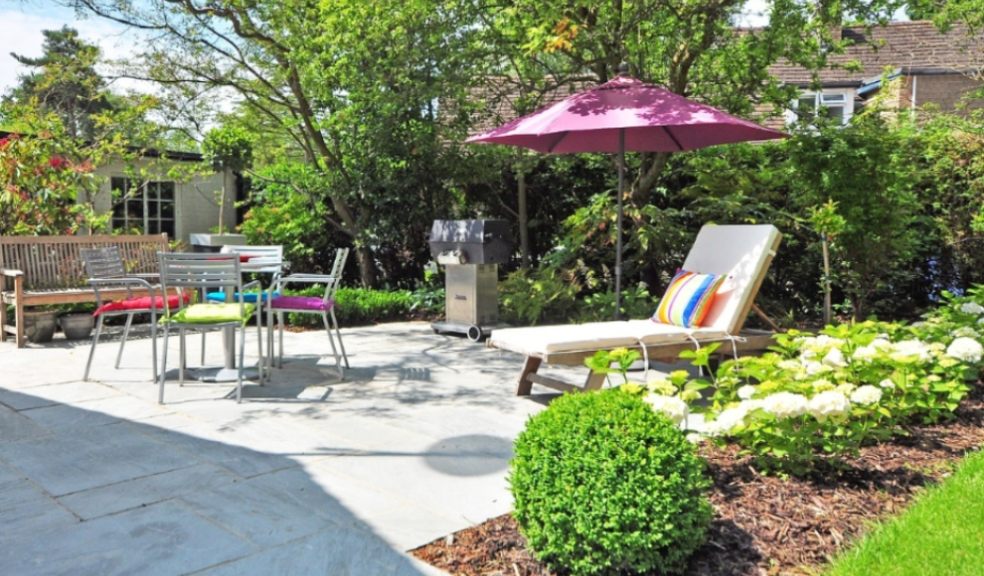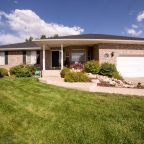
Garden Experts Reveal Their Secrets to Styling a North-Facing Space
As the UK prepares for the upcoming bank holiday weekend and the anticipation of warmer temperatures rises, Brits are turning their attention to their gardens —with BBQs, alfresco dining, and relaxing in the sun on the agenda.
However, sadly not everyone is blessed with a sun-soaked south-facing garden, so some underuse and undervalue the beauty of their north-facing garden.
With this in mind, the pergola and awnings specialists at Hillarys have provided their expert tips on how to make the most of your north-facing garden this bank holiday.
- Use shade-loving plants
Some of the most beautiful plants and flowers thrive in north-facing gardens, such as hydrangeas, lush ferns, climbing roses, bluebells and more. Many plants struggle with direct sunlight or high temperatures, causing plant scorching, but north-facing gardens, especially in the partially or fully shaded areas, give these shade-loving plants the home they need to flourish.
- Play with colour and shades
Banish dark, gloomy areas by inviting more colour in, from vivid shades of outdoor rugs, cushions, furniture, plant pots, and even feature walls to brightly coloured wildflowers. Choose bright and airy patios or pavers if you want to lighten up your space.
- Embellish pergolas with climbing plants
Pergolas are a great way to ensure you have a consistent shade within your garden, providing a functional but comforting space within your sometimes sporadically sunny garden - a perfect place to read or work from home. You can easily dress up pergolas and add height by playing with climbing plants such as roses or star-jasmine, which not only brighten your garden but smell amazing when in full bloom.
- Embrace cosiness with a fireplace or heater
With oftentimes limited sunlight, evenings relaxing in the garden or eating alfresco can sometimes be cut short by a chill in the air. Make the most of the longer evenings by installing a fireplace, fire pit or even an outdoor heater for when nights get chilly.
- Brighten up your garden with outdoor lighting
Whether you’re aiming for a modern, sleek garden or a romantic cottage-core countryside escape, outdoor lighting can help make the evenings or dark days a little lighter. Fairy lights, candles, or ground lights all offer great lighting and enhance the atmosphere—look for solar-powered lighting options to keep your bills down but your mood up.
- Fake the light with mirrors, ponds, and bird baths
Try using reflective features within your garden to bounce light into other areas of your space. Mirrors or water features are great ways to open up and illuminate the area.
- Place seating in the sun
It can be easy just to place furniture at the front of the garden, closest to your home, but sometimes, north-facing gardens see sun in the rear of the property for the longest. Determine which spots are sunniest and place your seating here. Even better if you have furniture that can be easily moved into sun spots or shifted into shade if needed.
- Plant strategically
Layer your planting, from placing taller plants at the back to draw in more light, experimenting with vertical gardens and raised beds to bring plants closer to the light. You could even choose space-saving options like hanging planters.
- Ditch the grass
If you have a small garden, then sometimes grass isn't the best option, especially within north-facing gardens where rain and water could pool in the shade, creating a boggy area. Try the Mediterranean aesthetic and use bright gravel, stones, pavers or decking instead of a lawn - you can dress it up with plants such as lavenders that can easily grow in rocky areas and give you that holiday feel at home.
- Embrace the shade for children’s play areas
Shaded areas of your garden are perfect spots for children’s play areas, with less sun and risk of UV exposure or overheating, place slides, swings or playhouses nestled in the shade.
Advantages vs. disadvantages of a north-facing garden
Advantages
- Temperature regulation and UV control
- Great options for shade-loving plants - less risk of plant scorching
- Ideal for mossy and woodland-style designs
- Great for early risers who can embrace the soft morning light
- Less plant watering
Disadvantages
- Limited sunlight and warmth
- North-facing gardens risk property value loss of up to £5,000, according to property experts
- Slower to dry after rainfall
- Grass may struggle to thrive
Victoria Robinson, product manager at Hillarys highlights the benefits of north-facing gardens:
“North-facing gardens often get a bad name in the property world, with many seeing the sun-restricted outdoor space as a chore. However, with the right design choices and gardening knowledge, you can make a retreat to be envious of.
“Playing with heights and shade is a great way to add depth to your garden, adding elements such as pergolas is an underrated way to extend your home into the garden and can be used all year round, with dimmable lighting features, privacy screens, electric louvered roofs and even rain protection to stop the classic drizzly british weather from dampening the mood of your garden party or outdoor entertaining.”













